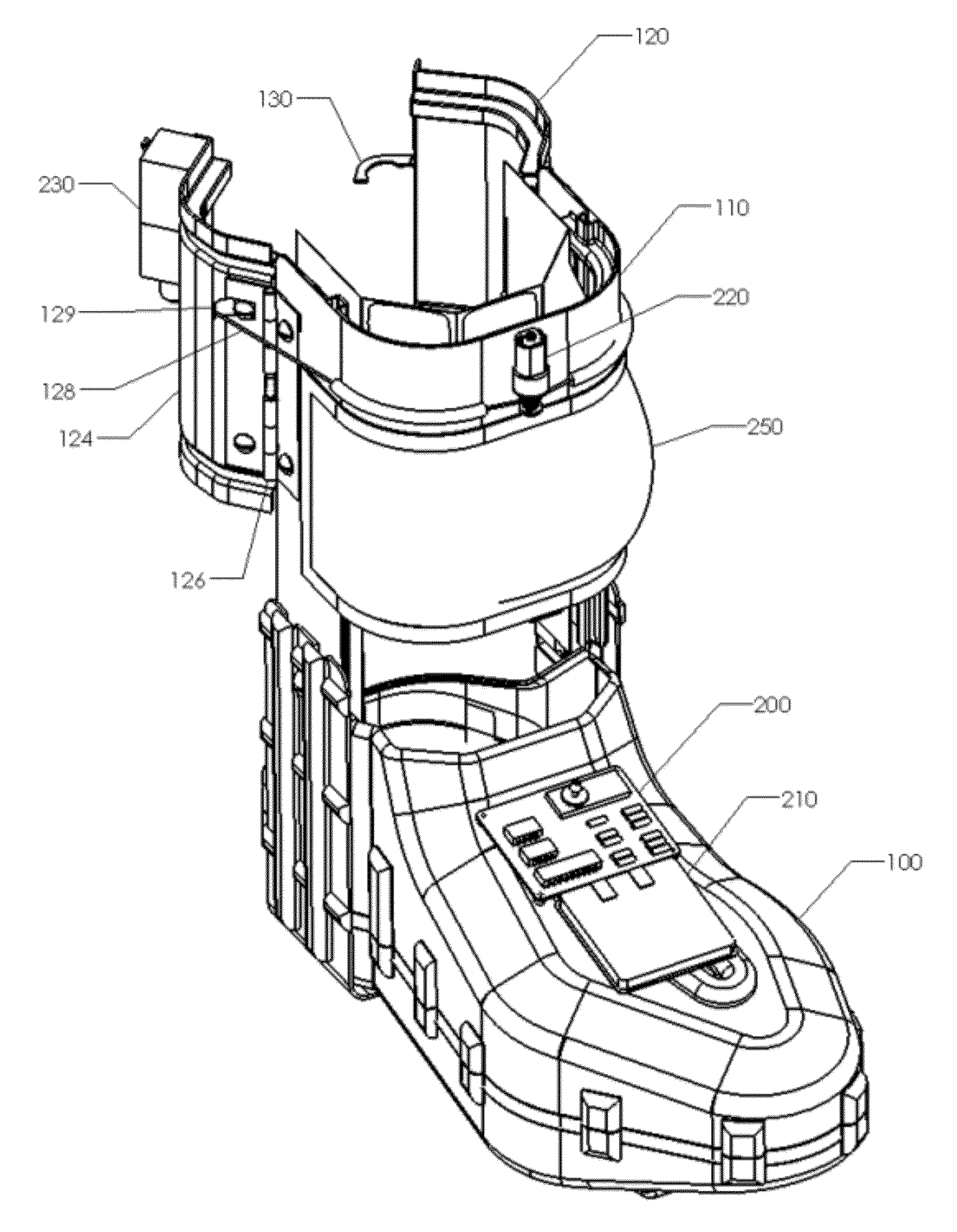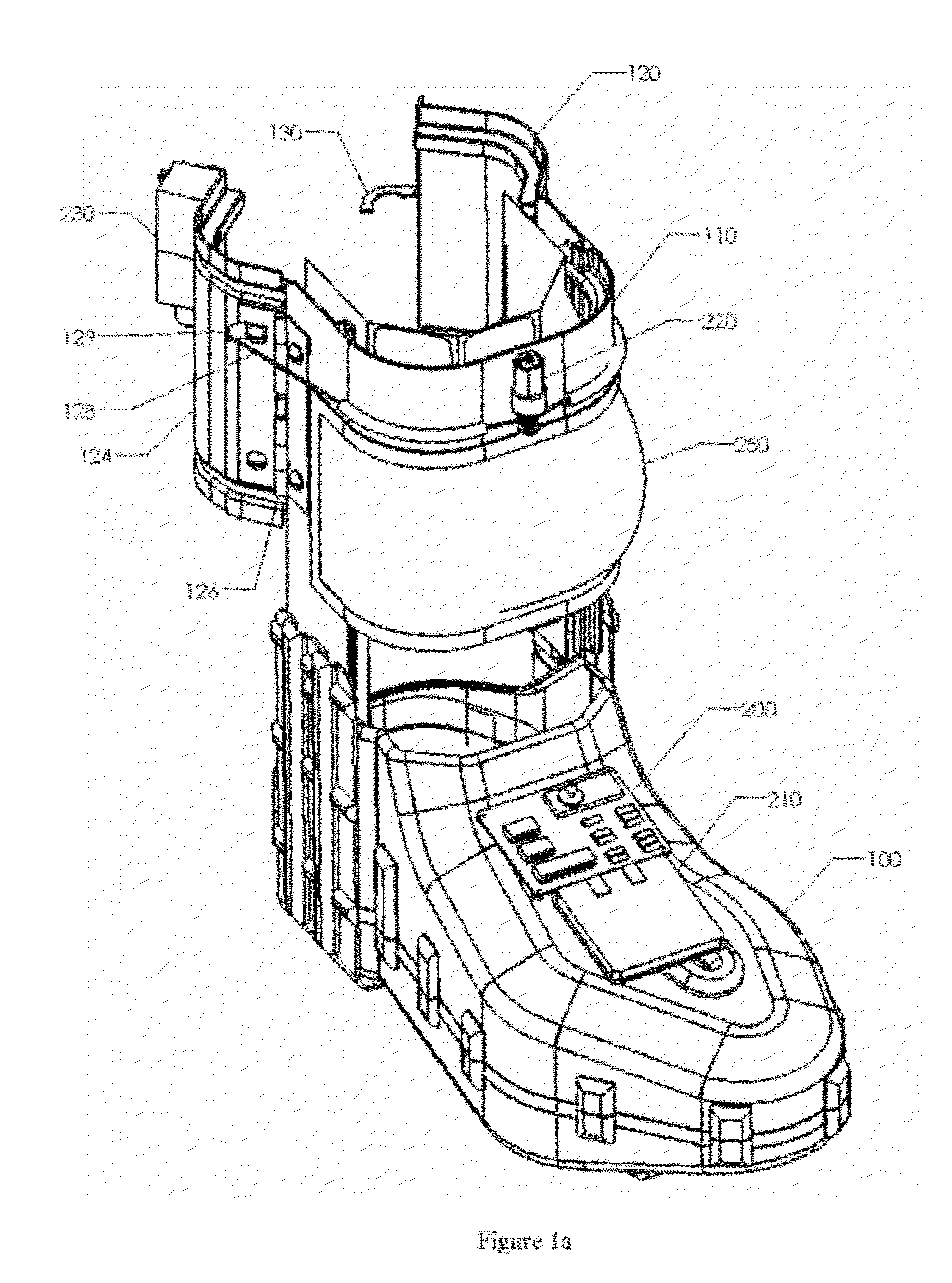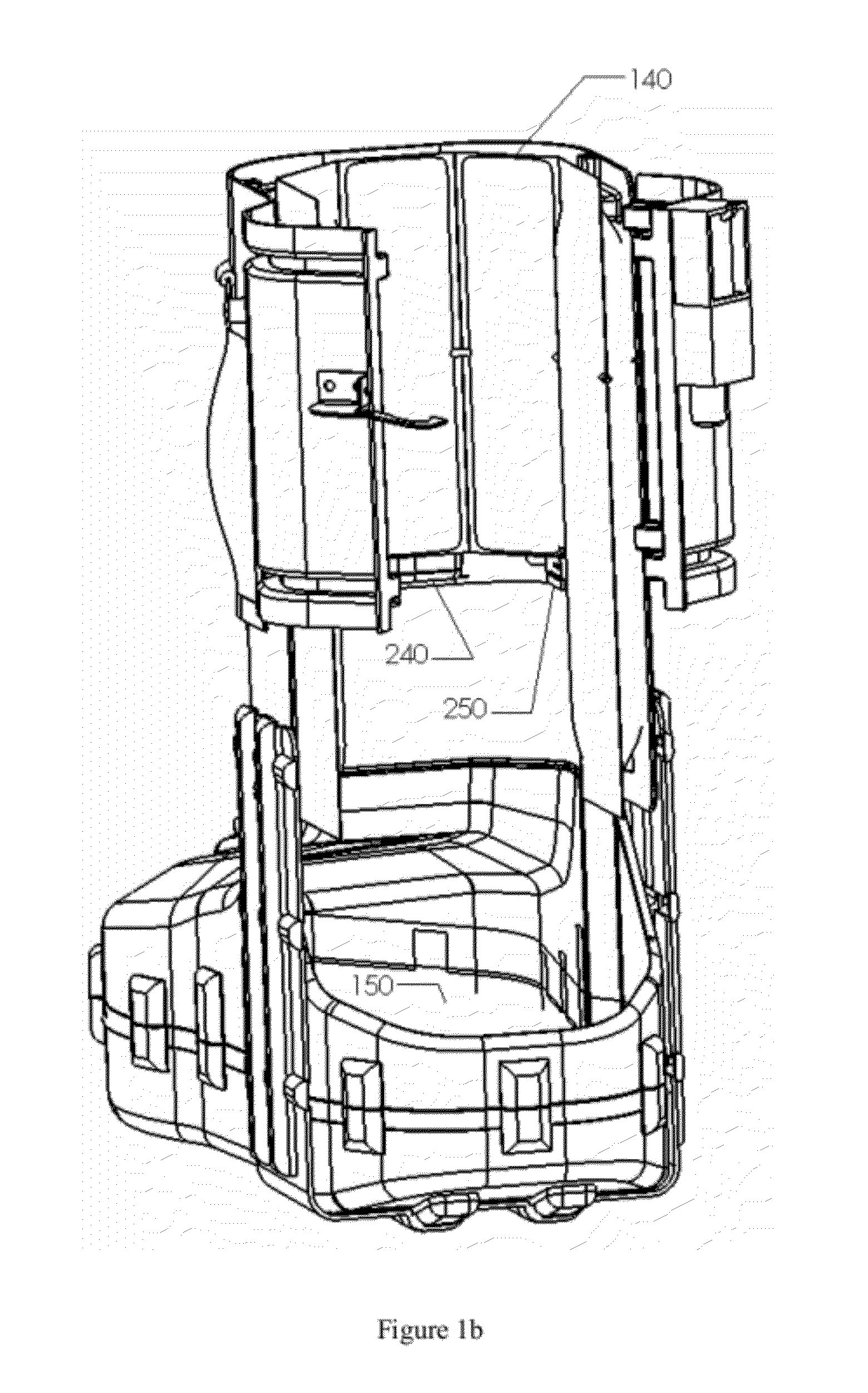Auto-Accommodating Therapeutic Brace
a technology of therapeutic braces and auto-accommodation, which is applied in the field of supporting apparel, can solve the problems of pain and stiffness, severe pain, and unbearable walking pain, and achieve the effect of reducing the load on the joint or surface during us
- Summary
- Abstract
- Description
- Claims
- Application Information
AI Technical Summary
Benefits of technology
Problems solved by technology
Method used
Image
Examples
Embodiment Construction
[0086]The apparel is used to accommodate to the needs of a wearer. It is intended to be comfortable while the wearer is at rest; comfortable enough that the wearer is not prompted to remove the apparel while at rest—as is so common with other load diverting braces.
[0087]Apparel is meant to include at least orthopedic brace, sleeve, footwear, glove and belt.
[0088]Foot Brace
[0089]The accommodating brace may be used to divert load from the foot to the leg of a wearer, as would be appropriate for a patient with a diabetic foot ulcer or for a patient with a foot or ankle injury. A brace to reduce load on foot ulcers would share many characteristics of a brace to reduce load on the ankle. The braces depicted in FIGS. 1 through 5 demonstrate some embodiments of accommodating braces of this sort. During load bearing, the brace tightens to the lower leg, and preferably deflates an in-sole so that some of the load is transferred through the structure of the boot / brace (from the ground to the ...
PUM
 Login to View More
Login to View More Abstract
Description
Claims
Application Information
 Login to View More
Login to View More - R&D
- Intellectual Property
- Life Sciences
- Materials
- Tech Scout
- Unparalleled Data Quality
- Higher Quality Content
- 60% Fewer Hallucinations
Browse by: Latest US Patents, China's latest patents, Technical Efficacy Thesaurus, Application Domain, Technology Topic, Popular Technical Reports.
© 2025 PatSnap. All rights reserved.Legal|Privacy policy|Modern Slavery Act Transparency Statement|Sitemap|About US| Contact US: help@patsnap.com



